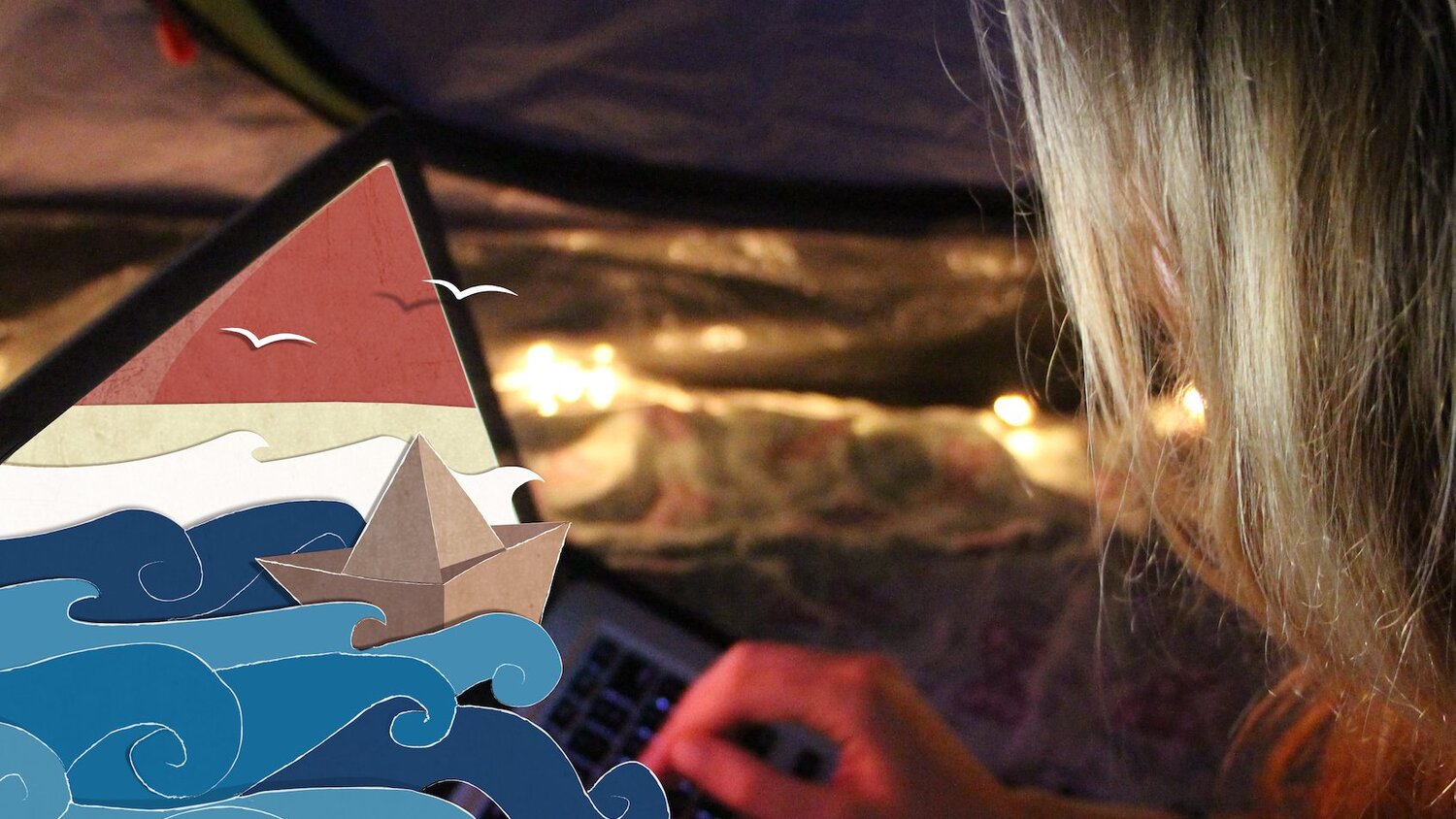Good Things To Do is technological poetry

Are you beyond salvation, or have you just forgotten to enjoy the parts of life that make it worth saving?
Do you need a reminder?
Good Things To Do is an immersive virtual experience “blending dreamy sonic landscape, solitary physical environment and an unexpected use of technology” in order to explore the softness within ourselves the world demands we abandon. Good Things To Do’s full embrace of a computerized form through all iterations of the project—from its initial workshop implementing digital design to the live installation at foldA in 2018 to its adaptation for COVID-19 today—is the very thing that potentiates the theatricality of dream logic on which it relies.
“Are you there?”, my phone is asking. Half an hour before the performance, a text checks in with each audience member to make sure they’re able to access the platform. Upon arrival, a deep green hue fades to white as you’re greeted by the words of someone you can’t quite remember. The technological onboarding is clear, conversational, and almost clairvoyant. As they calibrate the soundscape in tandem with the text, we’re asked to survey our space for things we’ve never noticed before. So I take in the angle the sun hits a bottle of ink; a spec of dirt on my foot; and the way I’ve hurricaned my belongings around the room of someone I love (my bad). The physical, mental, and social extent to which the creators are reaching out to participants delivers us deeper into the dream world, and the dream world directly into our individual rooms.
Like a transcript, words flow across and down the screen. Although it’s not clear who’s talking, it’s clear they’re talking to you. And sometimes you get to respond. It is said that when you dream about someone, they’re thinking of you. But how can you remember someone you’re not sure you’ve met? Initially, it was unclear whether the corrected misspellings are live or automated, but you’re spoken to with such care and sincerity that trust naturally follows. There may not have been someone typing in real-time, but there was still a person on the other side.

Web programmer Sam Mackinnon has reconstructed Good Things To Do as a web application, and built in delays for the text so that Mishelle Cutler and Molly MacKinnon’s sound design to play in tandem. You would never be able to tell that the host is timing each sound queue for up to 12 individuals as the text-sound delay is different for each user depending on internet connection or their speed of engagement. There was so much intention put into establishing an evocative interface and an emotional engagement, you become nostalgic for something that, to you, hasn’t happened yet. You let yourself travel through the dreamscape to the sounds of being tossed in the waves and not sinking.
With a focus on sensation, the creative team is very specific with what is shown onscreen at any given moment. While the in-person performance seeks to overwhelm and overstimulate its audiences, the digital adaptation has the opposite impulse. The atmosphere created is minimal yet potent, leaving everything up to imagination. Online, any notion of ‘performance’ is based on how you perceive the voice of the text—and it is the absurdity of dream logic that provides the foundation for you to suspend disbelief. The sensations of the show draw heavily from the creators’ connections to the lands of the Pacific Northwest where they have learned how relationships to land extend to relationships with people, and thus, how to create relationships through imagination. What Good Things To Do reveals is the porosity of exchange theatre provides.
One of writer Christine Quintana’s wishes with the remote delivery of this piece is to change the ways people feel in and about their own spaces. And if you let this experience change you, you’ll learn that the opposite of a dream is not necessarily a nightmare. There is a safety within ourselves, as long as we’re willing to look. The world is hard, but we are soft.
Somewhere.
Created by ‘The Good Things Collective’, Good Things To Do was taken on by Rumble Theatre in 2020 and ran through June 9-13 at the 2021 Festival of Live Digital Art. Click here for more information and you can catch their artist talk here.
